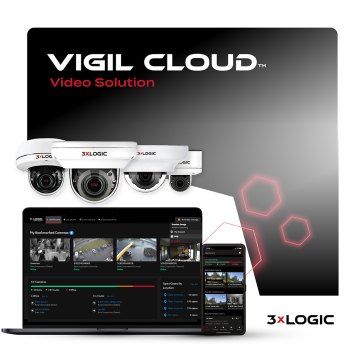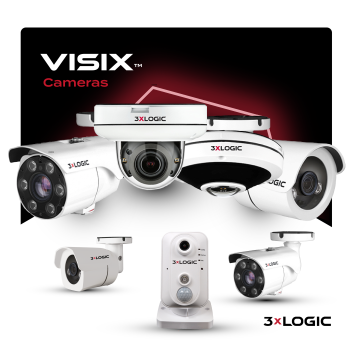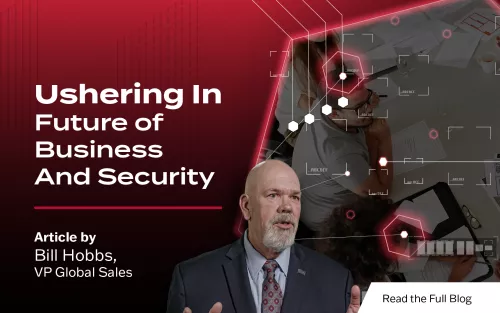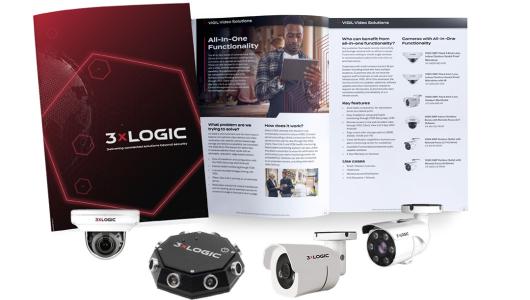Ushering in the Future of Business and Security Solutions with an Integrated Ecosystem
The security industry is evolving in how disparate solutions are deployed and how we interact with the data those systems produce. Access control, video surveillance, intrusion alarms and business intelligence platforms are among the myriad of security systems typically used by organizations. While all of these systems are essential to secure an environment or facility, they are typically installed and operated independently, resulting in conflicting pictures of the actual state of security.
Verifying who enters a secured facility is virtually impossible without video evidence of that entry. Alarms received from an intrusion detection system are impossible to confirm without live audio or video of the actual event. As a result, mitigation of serious security breaches and other active events is much more difficult because responders don't have real-time situational intelligence about the event. Forcing users or administrators of these security systems to navigate multiple interfaces and search various data sources dramatically delays response times and leaves room for human error.
Siloed security systems create unnecessary barriers to access solutions and data, slowing down critical functions and potentially causing security breaches and improper response. A security ecosystem allows businesses a more efficient, cost-effective and powerful, solution.
Importance of a Security Ecosystem
When all the systems that make up a security solution are integrated into an ecosystem, they can communicate and share data, improving overall connectivity. This creates a unified and seamless view of the environment or facility that is being protected, making it easier to identify potential threats and take action to mitigate them.
A significant advantage of a consummate ecosystem is improved reaction and response times to potential threats. Reaction and response times are critical to the effectiveness of a security solution. Having an integrated system that shares data can lead to a much more automated response, saving precious time. For example, data from an external sensor can be quickly relayed to video and access control systems, triggering pre-programmed automated responses, like lockdowns and instant notifications. Removing the human element from these decisions can help save lives and diminish dangerous incidents as they occur.
Automated alarm processing through artificial intelligence is another example of how having an ideal ecosystem can improve response and cut down on labor and inefficiencies. A truly integrated security solution can learn the characteristics of an alarm and mute or temporarily pause nuisance alarms. The best example is when audio alarms are monitored in a central station. Some audio events, such as an ice machine in a restaurant, occur at regular intervals and sound the same. The machine makes the same distinct noise each time it dumps a fresh load of ice into the storage bin. As these audio alarms are received, the central station operator will dismiss the alarm, knowing that it's simply the ice machine. As the ecosystem learns the operator's behavior in response to this alarm, it can begin to automatically mute or release any alarm that matches its learned pattern. The action required and the load on the central station is reduced, allowing operators to monitor more locations effectively.
Who Needs an Ecosystem?
Brought on by the pandemic and the ever-changing needs of a digital-first society, businesses value convenience, versatility and easy connectivity now more than ever — all of which the quintessential ecosystem should offer.
A prime ecosystem allows businesses, whether they operate from either a single premises location or a global operation with thousands of sites, to easily access multiple security solutions without any hurdles. It's designed to work independently, connect to correlated solutions or fit seamlessly within existing platforms and infrastructures. This increased connectivity between security systems leads to streamlined efficiency, improved response time and enhanced operational intelligence allowing a more effective and flexible solution, going beyond traditional security.
Here are a few benefits an ecosystem can bring to businesses:
Cloud Connectivity
The value of the cloud is unmatched in accessing, processing and storing data over the internet, delivering services anytime, anywhere and on any device. This connectivity is vital for an ecosystem as it empowers users to share critical information and insights easily and quickly with team members and other stakeholders regardless of location. Cloud-connected cameras today require a smaller IT footprint than in the past allowing video surveillance footage to be shared safely and securely with authorized users.
Cloud connectivity also enables solution software updates to be deployed seamlessly instead of requiring coordination between several teams and various platforms. This also permits businesses to remotely receive notifications of alarms, trigger a relay and both talk and listen to their site from anywhere in the world. In turn, the security decision-making process is streamlined, and an organization's business potential is unleashed.
Seamless Integration
An important capability of an ecosystem is seamless integration. An ecosystem of solutions can work together with other systems already implemented, saving businesses time and money on a solution and requiring minimal end-user training.
Each element of an ecosystem should have multiple options that can be configured for any size business in any sector and adjust to a business's specific needs. Integrated solutions within an ecosystem create one intuitive solution where the components within the solution harmonize creating one intuitive solution where video is automatically associated with access control events and alarms.
Business Intelligence
The most powerful benefit of an optimal ecosystem are the analytics derived from the business intelligence, which moves business efficiency to the next level. The data gathered from an integrated system — from video content to on-premises access points — gives a comprehensive view of a business. This data can be leveraged by a business to become more predictive and prescriptive, helping uncover interesting, value-added insights for better decision-making.
Business intelligence gives insights that go beyond security. Because business intelligence gathers data from the solutions connected in an ecosystem, users can take advantage of this information for a fresh perspective of other areas of the business. Thermal imaging cameras, which measure the infrared radiation emanating from objects, are meant to detect an intruder, identify what they're doing and capture the direction they're traveling in. But thermal imaging cameras integrated with an ecosystem can also show if equipment is overheating, letting users take action before potential problems arise.
Additionally, an ideal security ecosystem allows executive teams and other stakeholders to quickly understand key events and patterns related to a specific employee, transaction or aspect of the business via the data it collects. For instance, suppose an employee has a history of displaying unusual behavior at a company. An optimal ecosystem should be able to flag this behavior to help proactively prevent losses. On the other hand, while this behavior on the surface may raise suspicions, it could simply be a training issue that can be easily corrected. A properly integrated security ecosystem's data can help differentiate what is suspicious and what is simply a lack of training.
An ecosystem of quality products and services work effectively together. With an ecosystem, the client will also gain a partner to help future proof on-site security operations and respond quickly to changing needs. With the proper hardware, software, and deep expertise in security technology an ecosystem provides the resilience an organization needs to be secure, safe, and efficient for years to come.
We’re Here to Help
Talk to a 3xLOGIC expert today about how a security ecosystem can benefit your business today (https://www.3xlogic.com/contact-us). Learn more at 3xLOGIC.com

Bill Hobbs
Bill Hobbs’ career spans more than 35 years in the Systems Integration and Physical Security industries. Initially a software developer and systems engineer, Mr. Hobbs has built multiple Systems Integration businesses over his career, and for the past 15 years has led technical sales teams across a variety of industry leading organizations including Integral Technologies and Verint. Mr. Hobbs is currently the VP of Global Sales for 3xLOGIC.
Our 3xLOGIC Ecosystem Delivers Connected Solutions Beyond Security

VIGIL CLOUD™
VIGIL CLOUD™ extends the award-winning VIGIL Video Management System into the cloud with enhancements designed to harness the power, scalability, and ease of use that are the hallmarks of cloud services.
Read More >>

VISIX™ Cameras
Our array of NDAA compliant cameras meet the needs of different organizations. With our seamless integration, you can have different 3xLOGIC cloud capable cameras installed across a site and have them work harmoniously together.
Read More >>

Access Control
There's a reason why infinias access control solutions have been trusted for years. Whether leveraging cloud or server-based options, 3xLOGIC provides cost-effective security solutions that are easy to manage, and simple to install.
Read More >>




